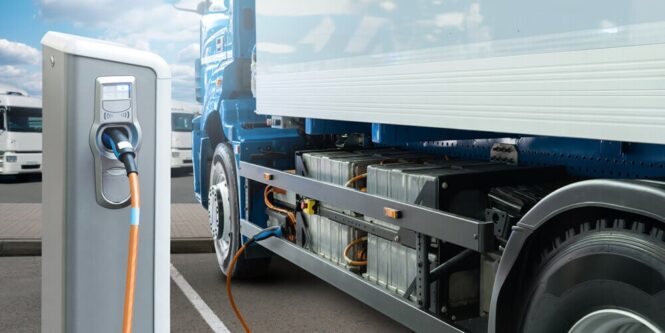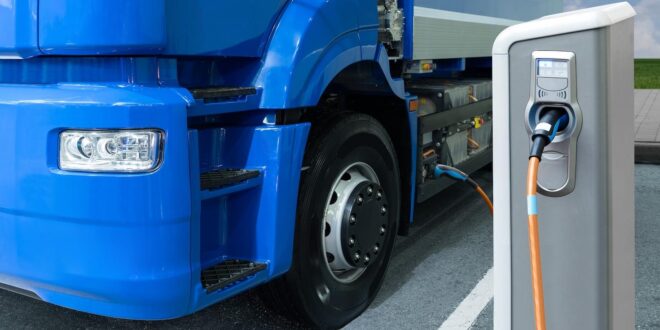Fleet electrification is fast becoming the new buzzword in many industries. This is mainly because businesses are searching for the fastest and most economical ways to reach their individual CO2 emission reduction targets. Despite this, many fleet operators are still sceptical about making the transition.
One of the biggest concerns companies have surrounds keeping an entire fleet charged without additional hassle. With this in mind, many smaller businesses are opting to add a portable EV charger to each vehicle as part of their charging planning. Apart from this, are there other charging considerations to keep in mind?
Charging Considerations as You Prepare for Fleet Electrification
The plus side to fleet electrification is that vehicles of all sizes can easily make the transitions. You may be deciding to electrify your fleet as part of your sustainability goals or simply to reduce the overall costs associated with fuel and maintenance. Since rising fuel costs are among the most common challenges faced by fleet owners, making the switch makes the most sense.
It’s important to note that the process will require considerable planning to minimize the overall costs and avoid major disruptions in the day-to-day running of your fleet. This type of transition is regarded as a medium to long-term plan. Many regard it as a sensible business plan to reduce future costs. Our experts have drawn up a list of the top considerations to keep in mind while you implement changes.
Identify the Exact Needs of Your Current and Future Fleet

The most important consideration to keep in mind is an understanding of your fleet requirements. This is typically made up of the following factors:
- Size and current and future composition of your fleet
- Average daily mileage used by each vehicle
- Usage patterns of each vehicle
- Plans for future expansion (how many vehicles will you be adding in the future?)
Taking the time to do all these calculations will empower you to determine the exact number and types of charging stations you might require. Furthermore, this will also give you an idea of the number of charging cables, portable chargers, and backup batteries to budget for. You will also be able to identify any potential challenges that may occur as you plan the electrification.
Then, look at the following.
Assess the Necessary Charging Capacities and Speeds
Keep in mind is that not all electric vehicles charge at the same rate. Different EVs will have varying charge times which will require some planning on your side to ensure that each vehicle is charged in time for the next day’s workload.
To simplify this process, you will have to purchase the correct charging equipment. Our experts recommend installing a few additional charging stations to ensure that all your EVs and chargers can be charged as needed. It’s also suggested that you opt for Level 2 charging cables that provide a faster charging time.
Review Charging Station Placement and General Accessibility

It should go without saying that you will need to invest in charging stations, especially if you want to optimize your fleet’s charging infrastructure. This may require changing the layout of the yard or depot where you store your fleet overnight.
For vehicles that are not parked in a central depot at night, search for stations that are close to the designated parking areas or drivers’ homes. It’s also a good idea to draw a comparison between common routes used by the fleet versus routes with public charging stations.
Having this information on hand will ensure you can easily plan so vehicles are never stuck somewhere, or not able to make it back to the yard in time. Keep in mind that having to tow a flat EV or sending someone out with a portable charger will result in additional costs.
It’s also important to assess whether or not electrical upgrades will be necessary to provide the safest and most cost-efficient charging infrastructure for all your EVs.
Look For Opportunities to Optimise Energy Management Systems

Another option worth considering is the addition of smart charging solutions. This will enable your team to implement load management as well as optimize various charging schedules. Taking advantage of certain energy management systems will make it easier to reduce the impact of peak charging demands.
You can strive toward utilizing rate optimizations. If your business already has renewable energy sources on hand, establish how you can create an infrastructure that accommodates your expected charging infrastructure.
Keep in mind that incorporating a renewable energy source is a simple way to enhance your carbon footprint reduction.
Final Thoughts
With so many vehicles crisscrossing the globe, it makes sense that electrifying business fleets is an enormous step toward reducing CO2 emissions. In addition, going electric is also an excellent way to reduce the rising fuel costs that are affecting every business budget. Whether you have two or 50 vehicles, electrifying your fleet makes economical as well as green sense!
As the shift towards fleet electrification gains momentum, careful planning and consideration of charging infrastructure are paramount. Identifying fleet needs, assessing charging capacities, optimizing station placement, and embracing smart energy management systems are key steps.
By embracing these essential charging tips, businesses can seamlessly transition to electric fleets, reducing CO2 emissions and mitigating rising fuel costs while contributing to a sustainable future. Electrifying your fleet, regardless of size, aligns with both economic and environmental objectives, making it a prudent choice for businesses committed to long-term sustainability and cost-effectiveness.
 Imagup General Magazine 2024
Imagup General Magazine 2024


